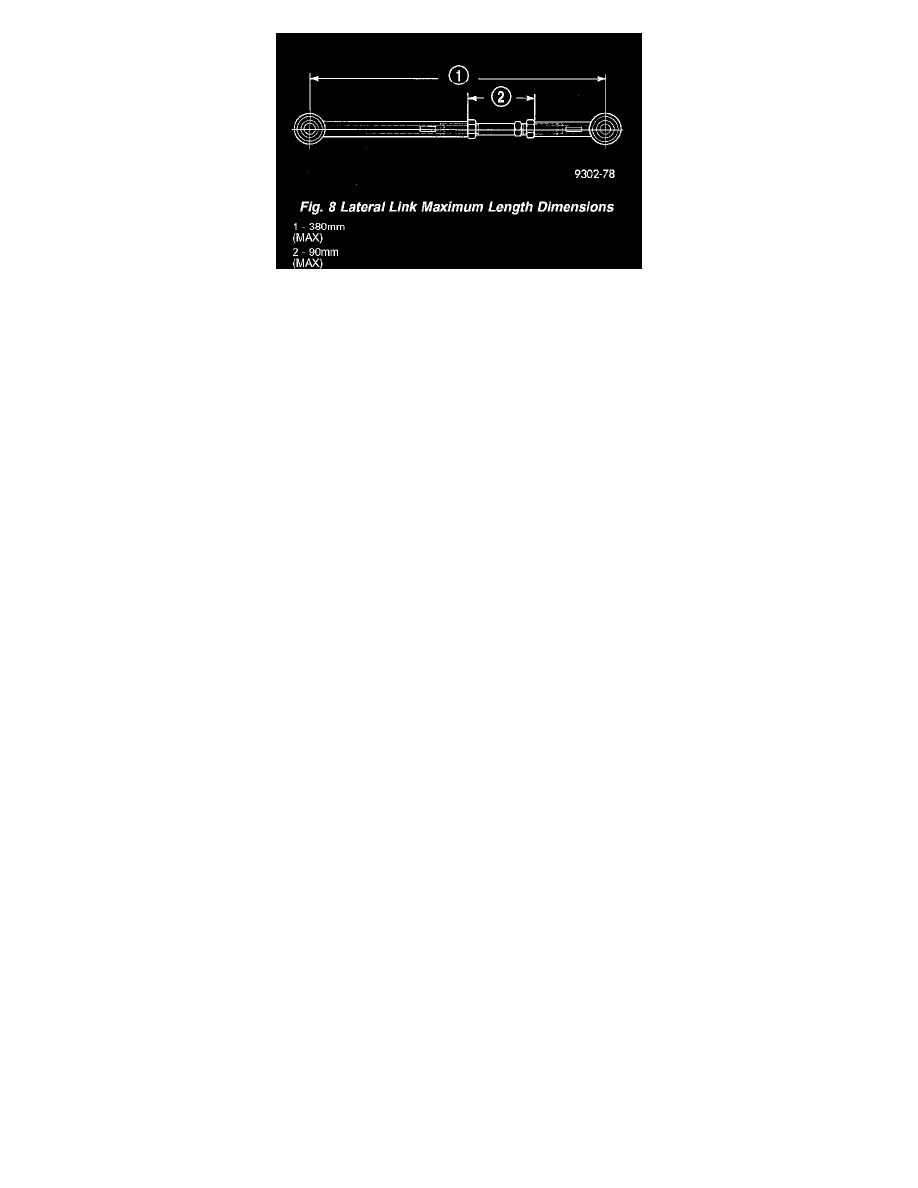Intrepid V6-2.7L VIN R (2003)

1. Loosen lateral link, adjustment link jam nuts. Rotate adjustment links as required to set rear wheel Toe to specifications. Do not exceed the
maximum length dimensions of the lateral links shown in. Both dimensions must be checked to ensure they do not exceed maximums allowed.
CAUTION: When setting rear toe-in on vehicle, the maximum lengths of the adjustable lateral link at the locations shown in must not be
exceeded. If these maximum lengths are exceeded, inadequate retention of adjustment link to the inner and outer link may result. Ensure that the
adjustment sleeve jam nuts are torqued to the required specifications when the Toe setting procedure is completed.
2. Tighten lateral link, adjustment link lock-nuts to 88 Nm (65 ft. lbs.) torque.
3. Proceed to set the front wheel alignment. If front camber and caster readings are within required specifications, proceed to Front Wheel Toe
Adjustment. If not, refer to the procedure to correct camber.
CAMBER AND CASTER
Front wheel Camber and Caster settings on this vehicle are determined at the time the vehicle is designed. This is done by determining the precise
mounting location of the vehicle's suspension components throughout the design and assembly processes of the vehicle. This is called a Net-Build
vehicle and results in no normal requirement for adjustment of the Camber and Caster after a vehicle is built, or when servicing the suspension
components. Thus, Camber and Caster are not normally considered an adjustable specification when performing an alignment on this vehicle. Though
Camber and Caster are not adjustable, they should be checked during the alignment procedure to ensure they meet the manufacturers specifications.
If camber and caster do not meet required specifications, the vehicles suspension components should be inspected for any signs of damage or bending.
This inspection must be done before performing the camber setting procedure.
If a vehicle has a drift or lead condition, the front camber can be adjusted using the camber adjustment procedure. For diagnosis of a lead/pull
condition, Refer to WHEEL ALIGNMENT - DIAGNOSIS AND TESTING.
CAUTION: Do not attempt to adjust the vehicles Caster or Camber by heating, bending or modifying the vehicle's front suspension components.
FRONT CAMBER ADJUSTMENT
There are camber adjustment bolts and nuts available to allow front suspension camber adjustment in the event the vehicle pulls even though the
camber is within specifications. This procedure involves replacing the original strut clevis to knuckle attachment bolts with special undersized bolts.
1. Raise the front of vehicle by the frame until the tires are not supporting the weight of the vehicle.
2. Remove the tire and wheel assembly from the location on the vehicle requiring camber adjustment.
CAUTION:
-
When removing the strut to knuckle bolts from the strut clevis bracket, do not allow knuckle to pull away, putting a strain on the brake flex
hose.
-
The bolts attaching the strut to the steering knuckle are serrated in the area where they go through the steering knuckle and strut. When
removing, do not turn the bolts in the steering knuckle. If bolts are turned in the steering knuckle, damage to the steering knuckle will result.
